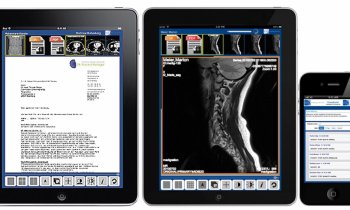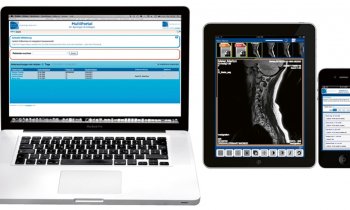Progressing towards the EPR
By Luisa Cattanea, IT Director at ASL Nº 11 Empoli
Today, the Local Healthcare Company ASL Nº 11, of Empoli, Florence, is a highly advanced public utility, able to face the challenges of technological innovations and to perform long-term objectives with leadership and competence.

Prior to 2002, the company focused on IT development of operative units in conformity with the ‘best of breed’ strategy, and it was developing projects guided by functional operators with a limited input from central information systems.
Our users were very satisfied with the final results of departmental projects, but they did not take into account the Electronic Patient Record (EPR) objective and the patient-centric logic.
In this context, which could be defined as ‘IT alphabetisation’, the IT resources mainly played a technological role: they designated the infrastructural support to project co-ordinators, without being involved in engineering processes and in managing the changes.
Therefore, departmental products established the basic structure of our IT strategy and they are still today in the upgrading or evolutive maintenance phases.
Between 2003 and 2006, under the direct sponsorship of a General Manager, the Hospital Information System (HIS) project developed; it began with the administration management of patients’ hospital admissions and discharges, then expanded to activities in hospital divisions, surgeries, operating theatres and the emergency department; it was strictly integrated with the above mentioned departmental systems.
The best specialised product was evaluated, particularly focusing on integrator competence. The strategy was for a medium to long-term partnership with a contractor.
We chose the company Italtbs, a European partner known for its clinical engineering division, with a business unit dedicated to the Hospital Information System Patidok, which is mostly widespread in Austria and Germany.
From the beginning the project integrated different functional areas, with the patient strongly in mind, along with models of sharing administrative and clinical data.
In the first two years the project encountered many of difficulties:
• Computerising a ‘paper and pen’ process, which caused slow operations and needed computer skills (not always suitable)
• The lack of an IT project manager, to coordinate activities between users and consultants
• The lack of key users, to take strategic decisions on changing processes
• The poor knowledge Italtbs had in the context of an Italian hospital, sometimes less ‘standardised’ in terms of Austrian and German realities: they are guided by strict rules, which we do not have, so we needed - sometimes heavily - to model the software to allow the different processes doctors were used to
• Finally, to win over the resistance to changes, which required a conversion in the doctor’s role and job (I could say the lack of the strategic role of a changeover manager)
Beginning in 2005, with the appointment of an IT project manager and the designation of hospital administrative managers as key users, the project went through the critical phase, obtaining a high level of satisfaction in all management roles.
From the beginning of this year, the IT Direction has faced the third phase of a shared development programme, building a central datawarehouse (DWH) to support Top Management strategic and decisional processes, by giving value to the large amount of data generated by new information systems.
A heavy investment of all the human resources involved is planned for the next two years; a key factor to success is the identification of a partner with technological knowledge, extended experience and innovative skills.
Therefore the selection of a Business Intelligence tool and a strong partner to support IT operators is at the end, and the DWH project is beginning: as a matter of fact, for the first time, the IT Division will be an actor, in addition to being a director. This project will encourage internal competence and skills, focusing on the changes brought to our company by the DWH spreading.
Following the same logic of IT partnership with external suppliers, after 2007, ASL 11 will be able to build a real electronic patient record (EPR) project.
01.07.2006











